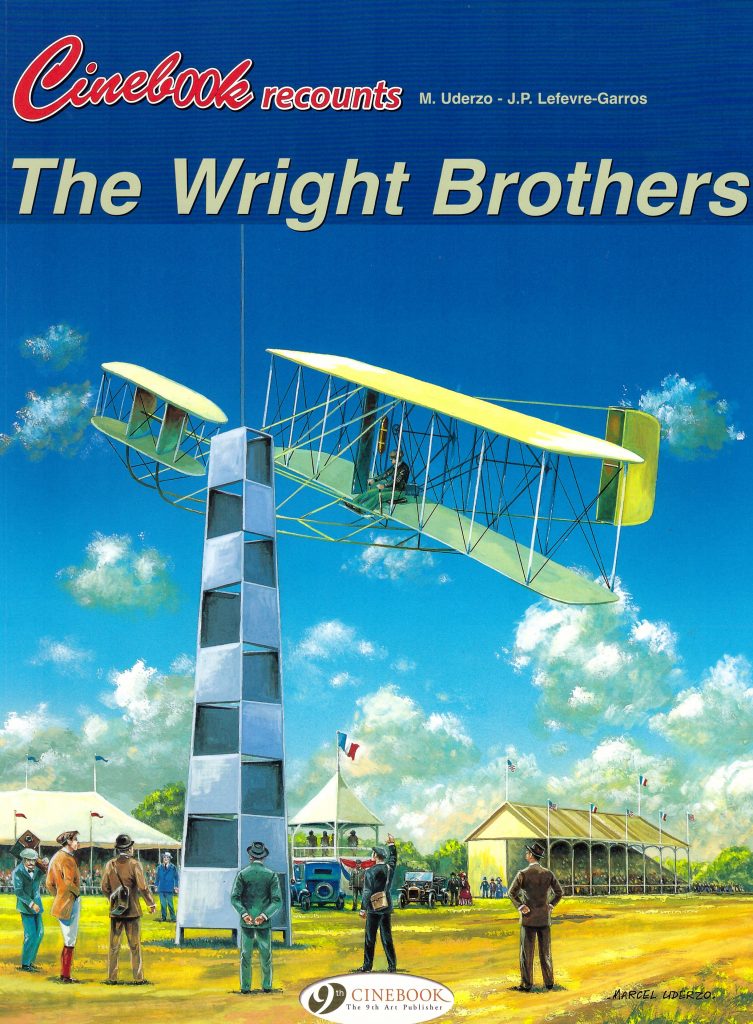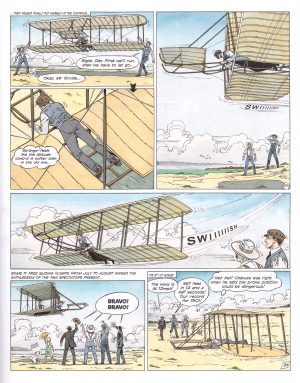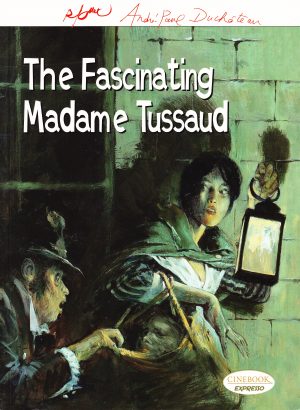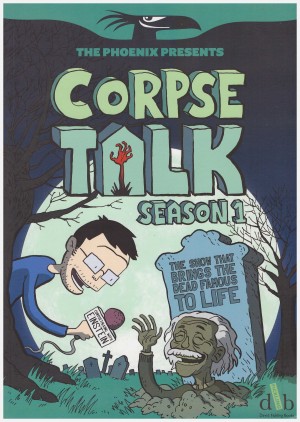Review by Frank Plowright
That the Wright Brothers invented the first flying device capable of carrying a man a credible distance has forever cemented their place in history. Beyond that, though, their lives and work are not known to many other than flight enthusiasts and historians, meaning there’s much for writer Jean-Pierre Lefèvre-Garros to reveal.
Artist Marcel Uderzo is the younger brother of Albert, co-creator of Asterix, and once worked with him, but he’s deliberately evolved a completely contrasting style, a cartoon naturalism that’s rich in detail. This isn’t just with regard to flight and associated technical matters, as he also fills rooms with ornate furnishings, supplies the inordinately complicated rigging of a sailing ship, and the workings of an individually designed printing press. Best of all, he never tires of drawing the assorted gliders the Wright brothers created. These may look primitive given how rapidly flight developed, but what Lefèvre-Garros brings out really well is the immense amount of technical calculations and minor adjustments required just to design the craft. Let it also be noted that along the way, Orville and Wilbur in passing constructed the first wind tunnel as a testing mechanism
The story Lefèvre-Garros presents is one of tremendous persistence, often in the face of adversity and limitations, and needing constant fine refinements with absolute dedication. While not over-emphasised it’s almost incredible to witness how modern day flight began over three autumns on a North Carolina beach. Having refined gliders to their satisfaction over 1901 and 1902, their longest flight lasting just 22 seconds and covering a distance of 557 feet, Orville and Wilbur added a light engine, spurred on by the knowledge of rivals. Lefèvre-Garros is good at detailing problems that perhaps wouldn’t occur to readers, and which sustain a suspense, one being that in 1903 the only way to learn how to fly a plane was to be in the air doing it, and the brothers’ early attempts more often than not resulted in damage. Also novel is that the earliest plane had to be launched from a rail, and while 1903 is the accepted date of the first flight, Orville and Wilbur still had many years of fine tuning ahead of them.
For anyone interested in the story of mankind’s earliest flights The Wright Brothers is information packed, a fine testament to dedication and perseverance.





